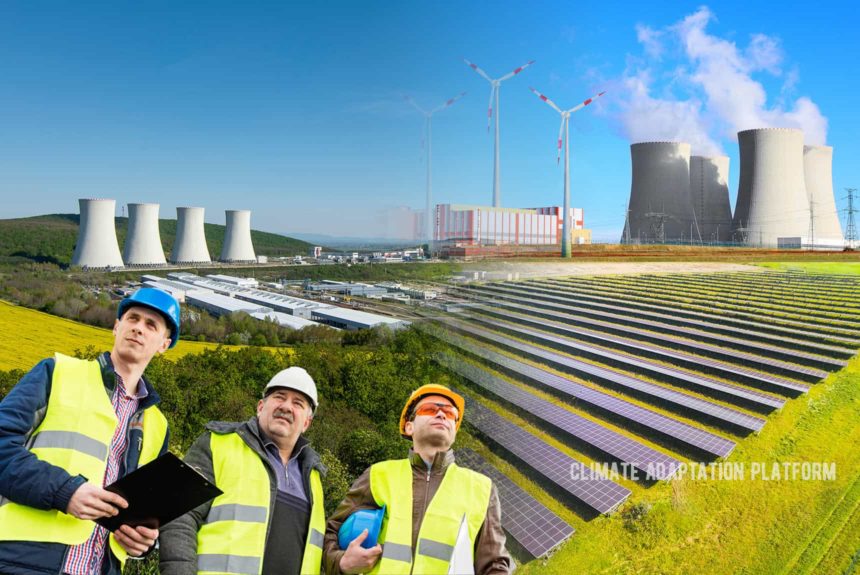Despite nuclear power’s potential to provide vast amounts of clean power, it remains an underutilised energy source. As a low-carbon energy source, some say it should be a growing part of today’s energy mix as the world replaces fossil fuels.
But for others, the risks from nuclear meltdown like what happened in Chernobyl and Fukushima outweigh its advantages. Then there’s the matter of the high costs of the nuclear reactor and the challenges of safely disposing of its radioactive wastes.
The nuclear industry may have found a solution to reduce the environmental and health risks from nuclear power for the world to give it a second try.
According to The Economist article “Developers of small modular reactors hope their time has come,” the industry is building “a new generation of small modular reactors (SMRs), designed to be cheaper, quicker and less financially risky to build.”
Countries like Russia, China, the UK, and the US are starting to produce SMRs. Russia tried this out in 2019, while China hopes to finish building one in 2026.
Britain will accelerate plans to build 16 SMRs that Rolls-Royce designed, and the United Sates’ NuScale Power will have SMRS providing power by 2029.
The International Atomic Energy Agency estimates about 50 SMR designs are being created worldwide.
SMRs, as their name suggests, are smaller than the standard nuclear plants and will roughly produce 300MW of electricity, a fifth of a standard nuclear reactor. But its small size will work to its advantage.
Chris Colbert, NuScale Power’s chief strategy officer, explains.
- “In a typical large reactor, you’re assembling most things in the field,”
- “You might have 8,000 people working on the site.”
NuScale plans to build their 77mw SMRs inside special factories with assembly done on-site. Colbert says building these reactors in factories can prevent weather-related delays, thus speeding up the processes, ensuring that there are always skilled people working and allowing customers to see their return on investment earlier.
The article describes the NuSCale’s SMR design, to wit:
- “NuScale’s design has a 23-metre-tall, lozenge-shaped reactor vessel that sits in a steel-lined subterranean pool of cooling water (see diagram) and is capped by a reinforced-concrete reactor building. Several plants can be combined into a large power station, or a few used to provide power to a single site. Such modularity implies redundancy, too, since individual reactors can be switched off for refuelling while the rest keep running.”
- “Going small also offers opportunities to simplify the design, which helps keep costs low. The cooling water in NuScale’s plant circulates through the core by simple convection, requiring no pumps or moving parts. And smallness, says Mr Colbert, brings safety benefits, too. Even if the internal cooling were to fail, the external water in the pond has enough capacity to absorb the small reactor’s heat production. Besides its putative plant in Idaho, NuScale has seen expressions of interest from Kazakhstan, Poland and Romania.”
- Other plant designs, X-Energy and U-Battery, use other chemicals to cool the reactor besides water, like molten lead or sodium or helium gas. These designs allow the reactor to reach temperatures of about 750°C, which means that reactors can sell the heat to industries in addition to electricity.
- Designers of U-Battery hope that their nuclear reactors will one day power glass, ceramics, steel, cement and paper factories that are now run by fossil fuels. Even reactors can produce hydrogen via thermochemical splitting, which uses heat to separate oxygen from hydrogen in water.
- While the high cost of building a reactor is one of the many obstacles to investing in nuclear power, while renewables are becoming cheaper, the IEA points out that renewables may not be as cheap once the storage or backup generation costs are added anymore.
Governments’ ambition to transition to a net-zero economy while looking for a sustainable and reliable source of power to replace fossil fuels makes nuclear power a feasible solution. Disruptions from the pandemic and the ongoing Russian invasion of Ukraine have dramatically increased oil and gas prices.
Meanwhile, the latest IPCC report calls for immediate and deep cuts to GHG emissions amid warnings from its authors that the window to prevent global warming from exceeding the Paris Agreement of 1.5 C is rapidly closing.
The world needs to reduce CO2 emissions by 43% by 2030 and reach net zero by 2050, slash methane emissions by a third by 2030 and halve by 2050 to stay within the 1.5 degrees of warming.
Whether nuclear power will become a serious energy alternative to fossil fuels will depend on innovations that will make nuclear power a lot safer to use and the industry’s making a good case for it.
Source:
Developers of small modular reactors hope their time has come. (2022, March 26). The Economist. Retrieved from https://www.economist.com/science-and-technology/developers-of-small-modular-reactors-hope-their-time-has-come/21808321



Leave a Reply